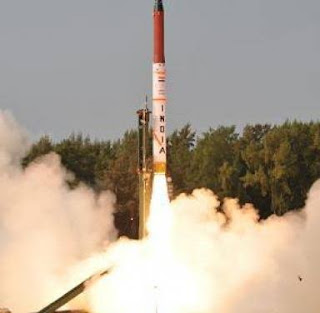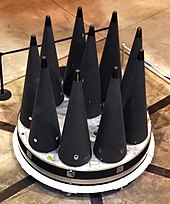India, on December 15, 2022, successfully carried out the night trials of the Agni-5 nuclear-capable ballistic missile. The test was carried out to validate new technologies and equipment on the missile which are now lighter than before. This was the ninth test-firing of the Agni-5, first was tested in 2012. The full range of Agni-5 missile is 5,400 km. The Agni-5 now can reach most cities in mainland China, including Beijing.
The test of missile was carried out by the Strategic Forces
Command (SFC) from APJ Abdul Kalam Island off the coast of Odisha. The nuclear
capable missile Agni-5 has been developed by the Defence Research and
Development Organisation (DRDO).
The Agni-5 can be equipped with the MIRV (multiple
independently targetable re-entry vehicles), which means Agni-5 is capable of
carrying multiple warheads. A single MIRV equipped missile can deliver multiple
warheads at different targets.
As per several reports, the weight of the Agni-5 missile
reduced significantly and Agni-5 will now be able to strike targets beyond
7,000 km. DRDO has reduced the weight of the missile by replacing its steel
content with composite materials. The weight reduction that has been achieved
in the missile system is beyond 20 per cent.
About Agni-5 Missile
Agni-5 is an ingeniously built advanced surface-to-surface
ballistic missile developed by DRDO under the Integrated Guided Missile
Development Programme (IGMDP). It is a fire-and-forget missile, which cannot be
stopped without an interceptor missile. The Integrated Guided Missile
Development Programme (IGMDP) is started by Dr. A.P.J. Abdul Kalam, who aimed
at making the country self-sufficient in the field of missile technology. The
program had five missiles Prithvi, Agni, Trishul, Nag, and Akash (PATNA).
Medium to Intercontinental versions of Agni missiles systems
1 to 5 have varying ranges, starting from 700 km to 7000 km for Agni-1 to
Agni-5 respectively.
Surface-to-surface nuclear capable ballistic missile Agni-5
has been successfully tested multiple times since 2012. Last test was carried out successfully in October 2021 from the APJ Abdul Kalam Island in Odisha. The
missile uses a three-stage solid-fuelled engine and capable of striking targets
up to 5,000 km with a very high degree of accuracy.


Blogger Comment
Facebook Comment